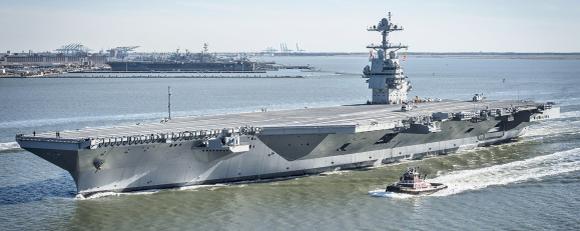 Back in January, Richard V. Spencer, Secretary of the Navy, made a promise to President Trump that the advanced weapons elevators on the new carrier USS Gerald R. Ford would be operational by the end of the summer or the president should fire him. The new carrier, costing $13 billion dollars, the most expensive warship ever built, cannot operate in combat without the electromagnetically powered elevators that carry munitions from the ship’s magazine to the hangar.
Back in January, Richard V. Spencer, Secretary of the Navy, made a promise to President Trump that the advanced weapons elevators on the new carrier USS Gerald R. Ford would be operational by the end of the summer or the president should fire him. The new carrier, costing $13 billion dollars, the most expensive warship ever built, cannot operate in combat without the electromagnetically powered elevators that carry munitions from the ship’s magazine to the hangar.
Without functional elevators, Rep. Elaine Luria (D-Va.), a Navy veteran, recently described the new carrier as a “$13-billion nuclear-powered floating berthing barge.”
The carrier was delivered from the shipyard on May 30, 2017, with only two of the eleven elevators working. Now, over two years later, the Navy has managed to get three out of the eleven elevators into operation. So far, the Secretary of the Navy (NavSec) still has his job.
Recently, the Navy announced that the USS Ford, which was originally supposed to be deployed in 2018, but whose deployment had slipped until 2020, may now, in fact, slip until 2024.
In the meantime, the Navy is short of carriers on the East Coast. Three carriers — USS George H.W. Bush, USS John C. Stennis, and USS George Washington — are in shipyards undergoing multi-year refuelings and/or maintenance periods. A fourth carrier, USS Harry S. Truman is sidelined with electrical problems. In September, four ships from the carrier Harry S. Truman Strike Group are deploying from the East Coast without the aircraft carrier.
